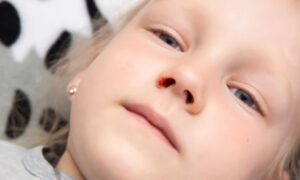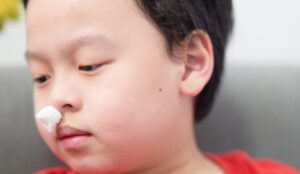What is Agoraphobia?
Agoraphobia is commonly understood as a strong fear of public places or crowds, which in severe cases may lead to an unwillingness to leave home or extreme anxiety about the external environment. While agoraphobia is often seen as an issue for adults, children can also be affected, particularly those who are especially sensitive to unfamiliar environments or uncertainty.
Characteristics of Agoraphobia in Children
Agoraphobia in children may present differently from adults. Children often have difficulty clearly expressing their anxiety, so the symptoms are more likely to manifest through behavioral and emotional changes, such as:
- Fear of leaving home: Children with agoraphobia may refuse to go to school, go shopping, or participate in social activities.
- Fear of public spaces: In open or crowded places like parks or malls, a child may become extremely uneasy or show signs of panic.
- Dependence on parents or family members: The child may become overly reliant on their parents and feel anxious even during short separations.
- Physical symptoms: Fear can trigger physical reactions, such as dizziness, nausea, a rapid heartbeat, and difficulty breathing.
Causes of Agoraphobia
The causes of agoraphobia in children are not due to a single factor but are typically the result of biological, psychological, and environmental influences. The main potential causes include:
- Genetic factors: If there is a family history of anxiety or phobias, the child may be more susceptible.
- Environmental factors: Traumatic events or significant life changes (such as parental divorce or the death of a loved one) may trigger anxiety in children.
- Psychological factors: Some children are naturally more sensitive or introverted, making them prone to anxiety in uncertain environments or when faced with large groups of people.
How to Identify Agoraphobia in Children
Early identification of agoraphobia symptoms is crucial. Parents and teachers can watch for the following signs:
- The child frequently refuses to go out or visit public places.
- They show unusual nervousness or fear during social activities or when interacting with others.
- The child exhibits excessive worry about open spaces, crowded areas, or unfamiliar environments.
If these symptoms appear, it’s recommended to seek professional help promptly. A psychologist or child counselor can conduct a thorough assessment to determine if the child has agoraphobia and help develop an appropriate treatment plan.
Treatment Options for Agoraphobia
The key to treating agoraphobia in children is to help them manage their anxiety and gradually regain confidence in the outside world. Common treatment methods include:
- Cognitive Behavioral Therapy (CBT)
Cognitive Behavioral Therapy is widely used to effectively treat agoraphobia. It helps children recognize their distorted thinking about fear-inducing situations and teaches them to respond in more positive and realistic ways. - Exposure Therapy
Exposure therapy aims to gradually expose the child to situations they fear, helping them adapt and reduce anxiety. For example, the therapist might first encourage the child to take a walk around the neighborhood, gradually extending the distance and complexity of the environment. - Relaxation Training
Relaxation techniques like deep breathing, meditation, or muscle relaxation can help children calm down during anxiety episodes and reduce the physical stress response. - Parental Support
Parental understanding and support are critical throughout the treatment process. Parents should avoid overprotecting the child and, instead, encourage them to face and overcome their fears gradually with positive reinforcement.
Agoraphobia in children may be relatively rare, but when it occurs, it can have a profound impact on a child's daily life and mental health. With early identification, professional treatment, and patient support from parents, most children can successfully manage agoraphobia and gradually regain their confidence in the outside world. Helping children understand their fears and learn coping strategies will lay a strong foundation for their future mental well-being.
Reference:
National Institute of Mental Health (NIMH) - Offers comprehensive information about anxiety disorders, including agoraphobia and its effects on children.
NIMH: Anxiety Disorders
American Academy of Pediatrics (AAP) - Provides resources on mental health issues in children, including anxiety and phobias.
AAP: Mental Health in Children
Anxiety and Depression Association of America (ADAA) - Focuses on anxiety disorders in children and adolescents, offering tips for parents and information on treatment options.
ADAA: Childhood Anxiety Disorders
Child Mind Institute - Discusses agoraphobia and related anxiety disorders in children, along with treatment approaches.
Child Mind Institute: Agoraphobia
National Child Traumatic Stress Network (NCTSN) - Offers resources for understanding trauma and its impact on children, including anxiety and phobias.
NCTSN: Anxiety and Trauma








